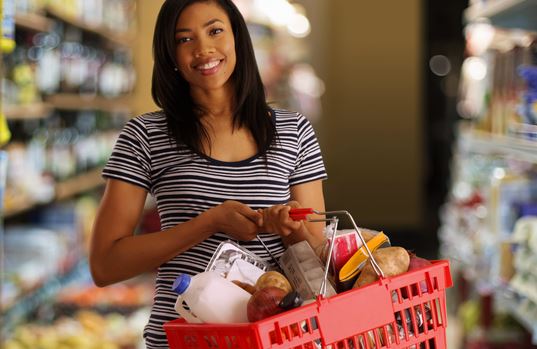It is very important that you understand how the grocery stamp benefit program can be of great help to you and your family before applying for grocery stamps or SNAP benefits at your local Social Security Office. The benefits of food stamps can benefit thousands of people dealing with food insecurity. Households that cannot meet all of a family’s needs could face difficult economic times. This article will provide you with a great deal of information to better understand the ways grocery brands can help keep your family from starving during difficult or critical times.
What are food stamps?
The Food Stamp Program (Supplemental Nutrition Assistance Program (SNAP)) is a federally funded program that provides low-income households with monthly benefits to help cover the cost of food.
SNAP is delivered digitally via an EBT (Electronic Benefits Transfer Card) card that is loaded with a certain amount of money every month. To redeem the benefits, recipients scan their EBT card at the cash register to purchase eligible groceries with their SNAP benefits.
ALSO SEE: Grocery stamp calculator: How many grocery stamps will I get?
To apply for SNAP assistance, you must meet strict USDA income and other eligibility requirements and follow all program guidelines to remain in the program.
How can Food Stamp help me and my family?
Currently, grocery stamps are the nation’s largest program on the National Hunger Safety Network for low-income people and families. According to the USDA, in 2016, SNAP helped an average of 44.2 million people in 21.8 million US households obtain nutritious foods.
In addition, the beneficiaries received additional benefits, including:
- Households have increased food purchasing power: Although SNAP recipients are expected to use some of their disposable income towards food expenses, SNAP reduces the amount that must be spent on family nutrition. This means that more disposable income is available for rent, transport or ancillary costs.
- Coming out of poverty: If the value of SNAP benefits is counted as income, in 2016 10 percent of participating households moved beyond the federal poverty guidelines.
- Automatic performance adjustments: During the economic recession, the benefits of grocery brands increase. As the economy improves, SNAP participation decreases, shifting the flow of benefits to communities with rising unemployment. Buying groceries with SNAP benefits brings dollars back into the local economy. Empowering the communities where food stamp recipients live and work.
- Free or discounted meals for children: Children living in SNAP households automatically receive free or inexpensive breakfast and lunch on school days. This is offered through the National School Lunch Program and the School Breakfast Program. Children in schools or daycare centers that do not offer national breakfast or lunch programs automatically receive free milk through the special milk program.
ALSO SEE: How to Report Grocery Ticket Fraud
What Your Grocery Brands Cannot Buy Benefits
SNAP provides access to a wide variety of foods including plants and seeds that produce food for the home. Households are not allowed to use their SNAP benefits to purchase the following items:
- Food to be eaten in the store
- Warm food, such as from a grocery store
- Pet food
- Vitamins and medicines
- Beer, wine or schnapps
- Soap and shampoo
- Live animals and birds, excluding live seafood such as fish, lobsters and shellfish
- Diapers
- Cigarettes or tobacco
- Detergents and paper products.
SNAP attendees are encouraged to take advantage of their benefits to buy healthier foods like meat and dairy products. Also fruits and vegetables, rice, bread, pasta and muesli. Grocery stamps can also be used to purchase non-alcoholic beverages and snacks such as fries, cookies, and ice cream.
ALSO READ: What foods can you buy with SNAP benefits?
Learn how to get groceries in an emergency with this article on emergency food stamps. If you are hungry now, please pick up your phone and call the national hunger hotline at 1-866-3-HUNGRY (1-866-348-6479) or 1-877-8-HAMBRE (1-877-842 -6273) an) in Spanish. The hotline is open Monday through Friday, 7:00 a.m. to 10:00 p.m. Eastern Time.

